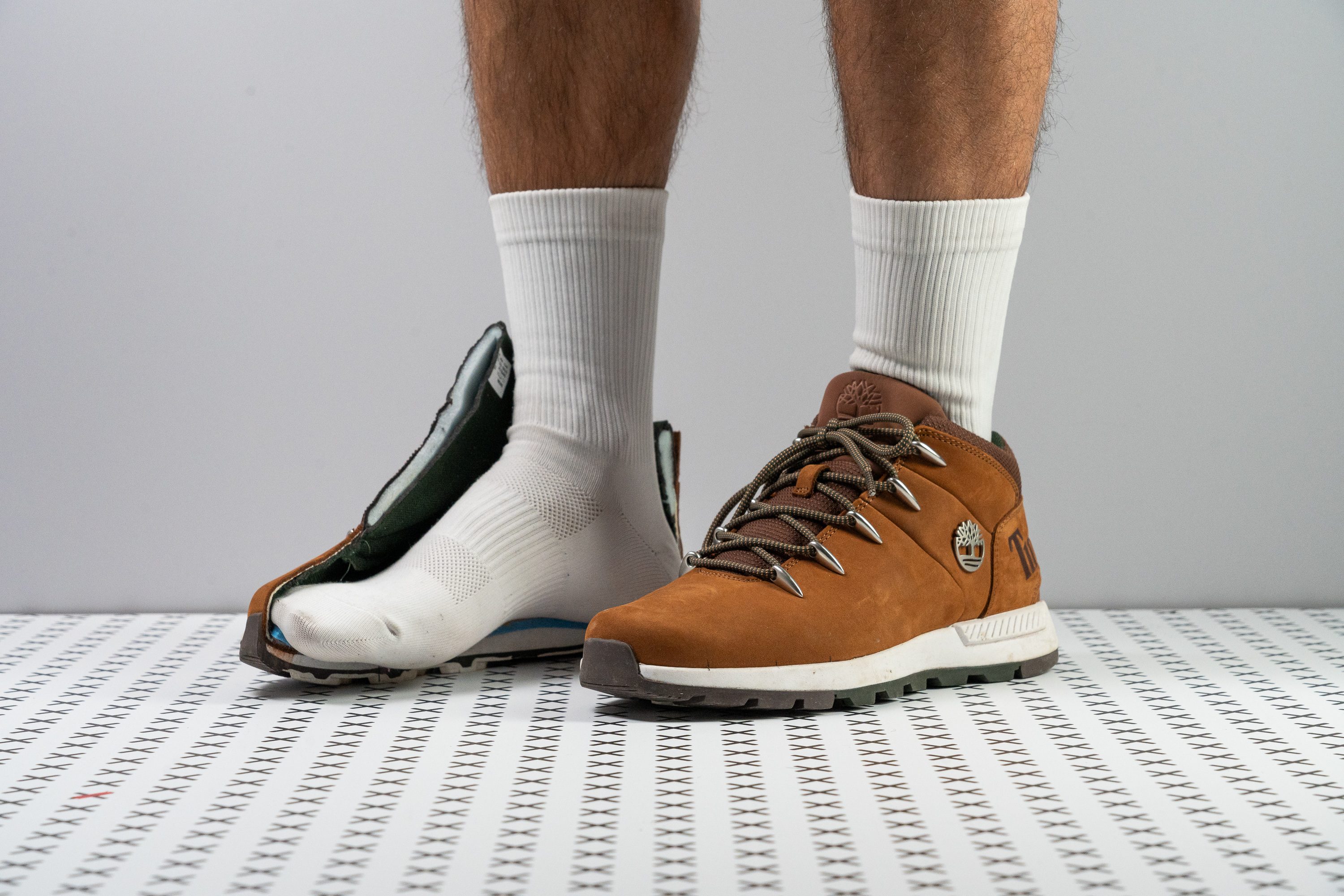Our verdict
- Top pick in best boots for light hiking
Pros
- Beautiful aesthetics
- Very light for a leather boot
- Hard-wearing rubber outsole
- High-quality nubuck upper
- Deep lugs and great grip
- Comfortable in-shoe feel
- Affordable
Cons
- Not a proper hiking boot
- Narrow restrictive toebox
- Lacks breathability
Audience verdict
Comparison
The most similar hiking boots compared
+ + Add a shoe | |||||
|---|---|---|---|---|---|
| Audience score | 83 Good! | 87 Great! | 90 Great! | 83 Good! | |
| Price | $120 | $130 | $200 | $110 | |
| Trail terrain | Light | Light | LightModerate | Moderate | |
| Shock absorption | - | Moderate | High | Low | |
| Energy return | - | Moderate | High | High | |
| Weight lab Weight brand | 16.5 oz / 468g 15.9 oz / 450g | 15.5 oz / 439g 15.7 oz / 444g | 15 oz / 425g 15 oz / 425g | 18.1 oz / 513g 17.1 oz / 485g | |
| Lightweight | ✓ | ✓ | ✓ | ✗ | |
| Breathability | Moderate | Warm | Breathable | Moderate | |
| Use | Light HikingUrban hikingBeginners | Light HikingUrban hikingBeginners | Day HikingSpeed HikingLight Hiking | Light HikingUrban hikingBeginners | |
| Orthotic friendly | ✓ | ✓ | ✓ | ✓ | |
| Drop lab | 6.2 mm | 12.3 mm | 14.4 mm | 14.0 mm | |
| Size | True to size | True to size | True to size | True to size | |
| Midsole softness | Balanced | Soft | Soft | Firm | |
| Difference in midsole softness in cold | Small | Normal | Big | Small | |
| Heel counter stiffness | Flexible | Flexible | Flexible | Flexible | |
| Stiffness | Moderate | Flexible | Flexible | Moderate | |
| Outsole hardness | Very hard | Average | Very soft | Soft | |
| Waterproofing | - | Waterproof | - | - | |
| Material | Leather | Textile | KnitMesh | Leather | |
| Season | All seasons | Winter | SummerAll seasons | All seasons | |
| Toebox durability | - | Bad | Decent | - | |
| Heel padding durability | Bad | Decent | Good | - | |
| Outsole durability | - | Decent | Good | - | |
| Width / fit | Medium | Narrow | Wide | Narrow | |
| Toebox width | Narrow | Narrow | Medium | Narrow | |
| Lug depth | 4.0 mm | 3.0 mm | 3.7 mm | 3.4 mm | |
| Heel stack lab | 26.2 mm | 31.5 mm | 38.4 mm | 34.6 mm | |
| Forefoot | 20.0 mm | 19.2 mm | 24.0 mm | 20.6 mm | |
| Widths available | Normal | Normal | Normal | NormalWide | |
| Technology | Ortholite | - | - | Ortholite | |
| Cut | Mid cut | Mid cut | Mid cut | Mid cut | |
| Removable insole | ✓ | ✓ | ✓ | ✓ | |
| Ranking | #31 Bottom 24% | #17 Top 42% | #6 Top 15% | #30 Bottom 26% | |
| Popularity | #38 Bottom 7% | #28 Bottom 31% | #14 Top 35% | #10 Top 25% |
Who should buy
The Sprint Trekker from Timberland is a fantastic blend of eye-catching form and trail function. We bet you'll enjoy this Timbs boot if you are after the following:
- a casually styled boot that can go from the trail to a coffee shop, bar, mall, etc.
- a lightweight pair of leather boots
- non-rugged footwear for hard-packed terrain with mild inclines
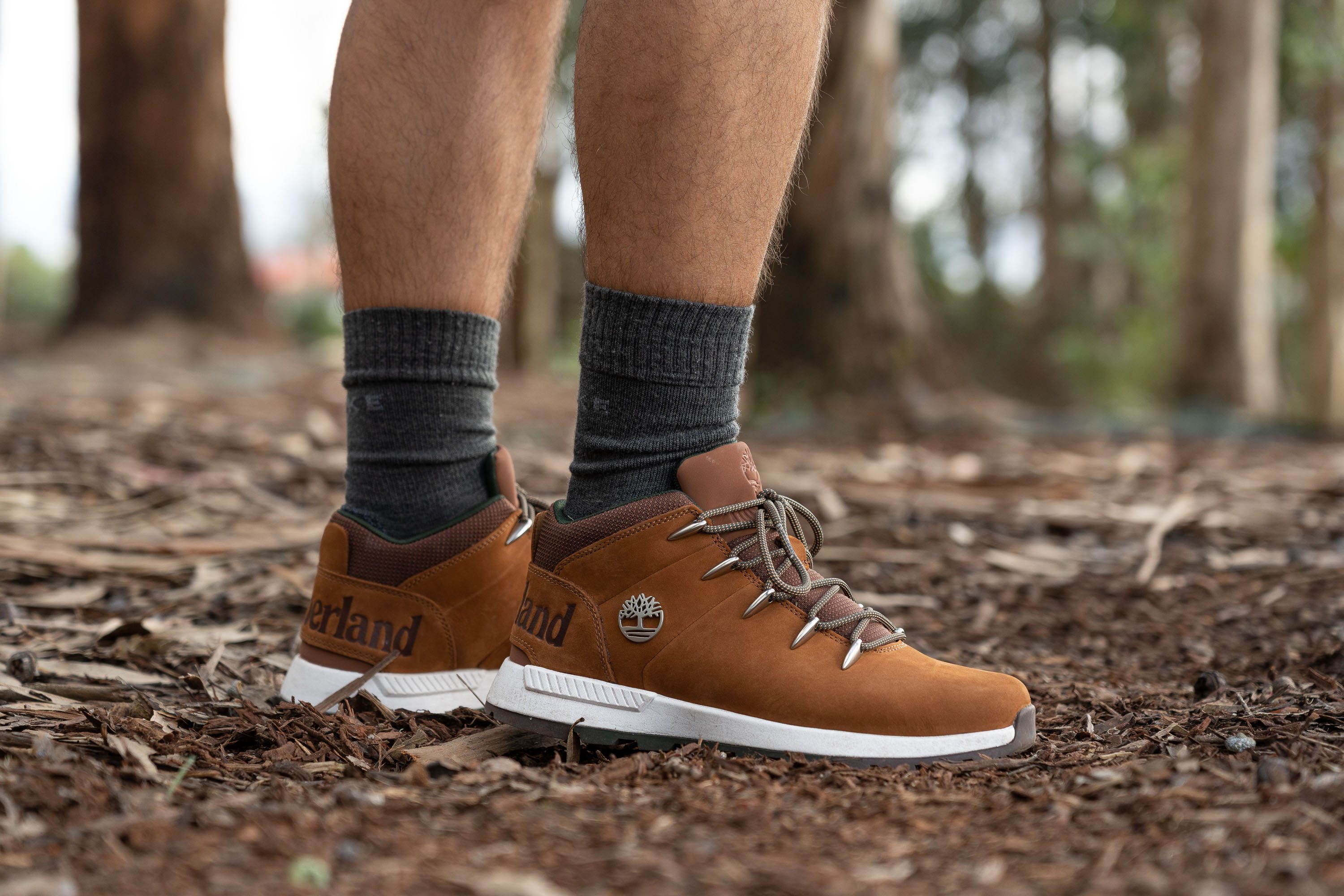
Who should NOT buy
If you are someone who needs lots of arch and ankle support in your footwear, we recommend the Timberland Euro Hiker instead. The boot is equipped with an unforgiving steel shank which makes the platform super rigid. This boot also has a taller and more padded collar which grants more ankle support.
And if you think you need a more functional hiking boot for long and challenging hikes, stay away from the Sprint Trekker. We insist on getting a boot like the Asolo Fugitive GTX instead.

Cushioning
Heel stack
Looking at the amount of cushioning, it is clear why the boot weighs so light. Our caliper shows only 26.1 mm of stack height in the heel, which is a whole centimeter lower than average!
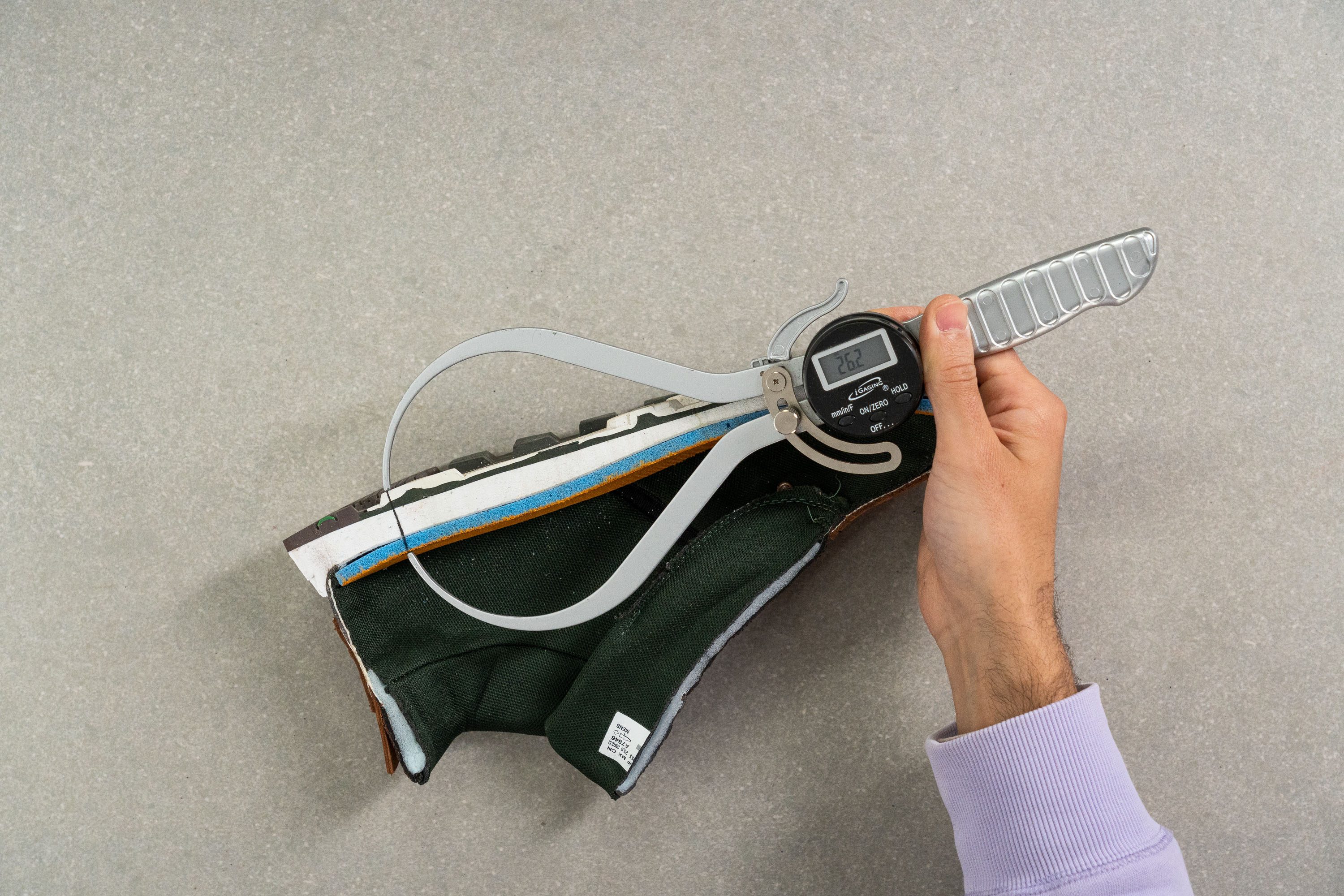
For that reason, we highly recommend wearing the Sprint Trekker for short hikes only. It simply doesn't have enough foam to buffer the impact if you plan to wear it from dusk to dawn while carrying a backpack.
| Sprint Trekker | 26.2 mm |
| Average | 36.3 mm |
Forefoot stack
The boot's forefoot stack comes in at 20 mm which is also a little lower than the average. But it does give a more stable and grounded feel.
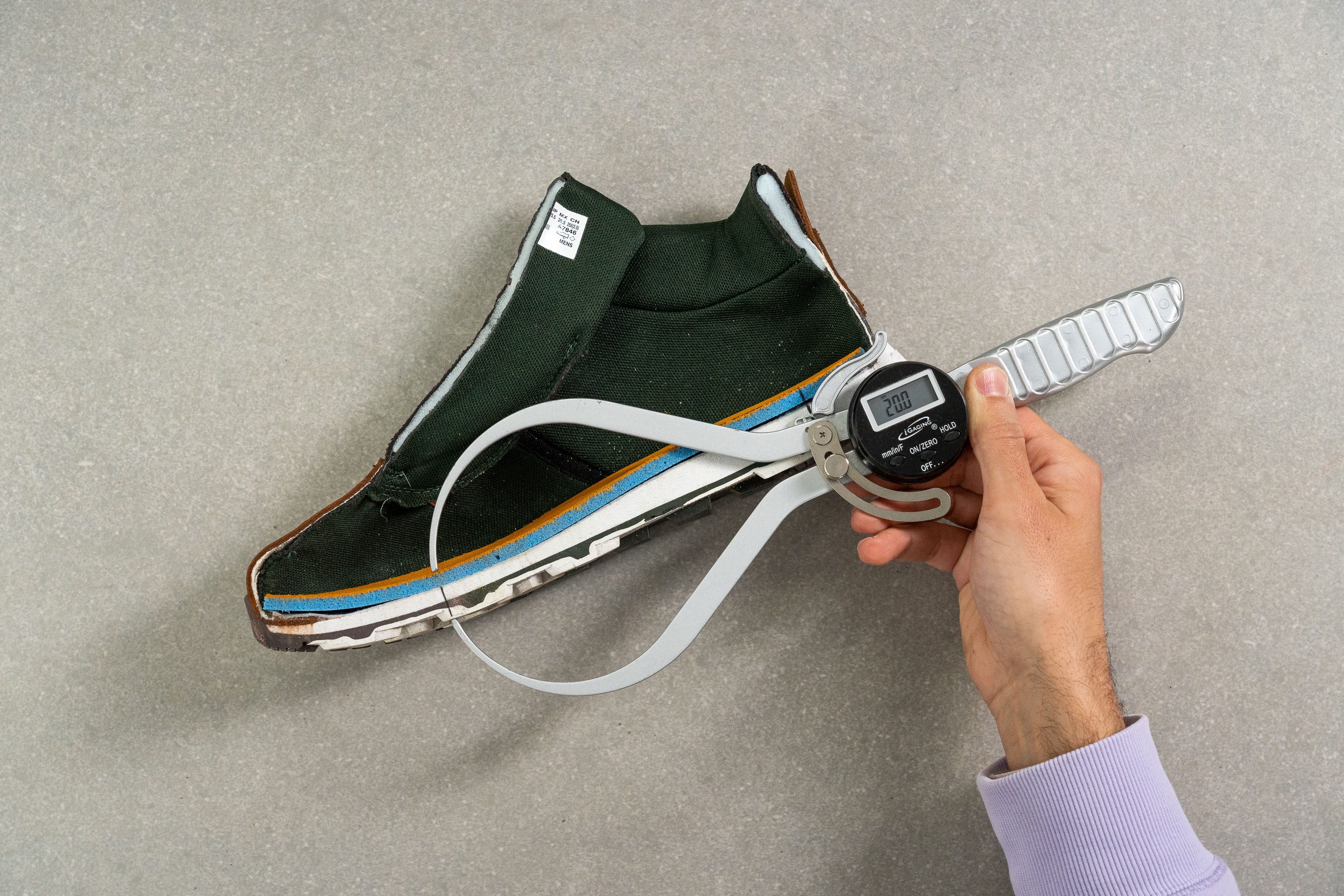
| Sprint Trekker | 20.0 mm |
| Average | 23.0 mm |
Drop
Calculating the difference in stack heights, we got a drop of 6.2 mm. This is one of the lowest we've seen in hiking boots!
It means that your foot stays more parallel to the ground, and the heel elevation is barely noticeable. This setup delivers a more natural walking experience but lowers impact protection when stepping on the heels.
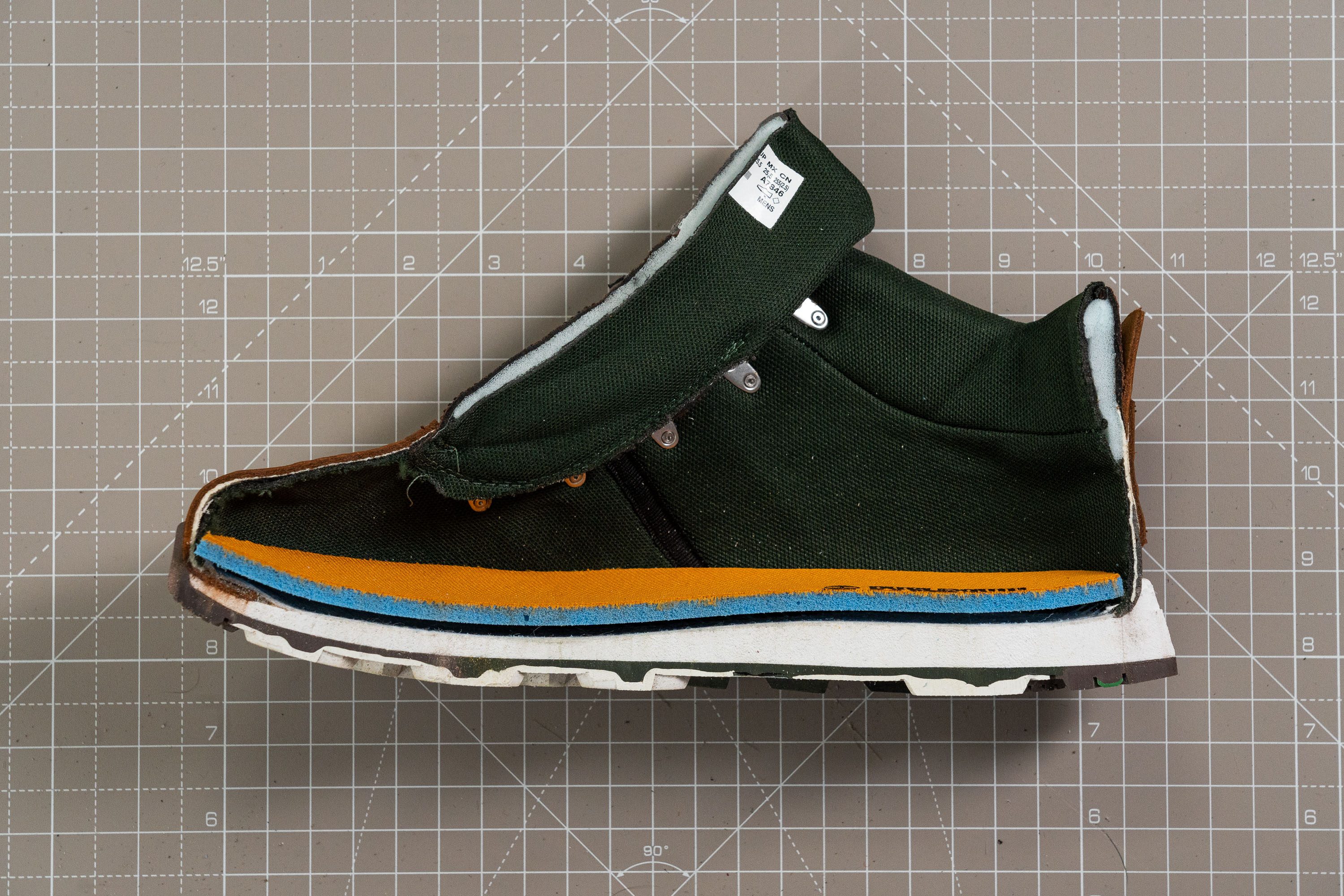
| Sprint Trekker | 6.2 mm |
| Average | 13.3 mm |
Midsole softness
Just like many other hiking boots, the Timberland Sprint Trekker has a slightly firmer cushioning.
Measuring the foam with a durometer, we got a reading of 28.8 HA which is exactly the same as the average.

A squishy sole is the last thing you want to experience when going up or down the incline or navigating the rocks.
| Sprint Trekker | 28.8 HA |
| Average | 28.4 HA |
Size and fit
Size
Timberland Sprint Trekker fits true to size (16 votes).
Width / Fit
In our regular hiking boot size, the Timberland Sprint Trekker felt pretty tight in the toebox.
Measuring the widest part of the forefoot, we got 99.1 mm. That's a couple of millimeters narrower than average but is not as critical.
The real problem is the shape of the toebox itself...
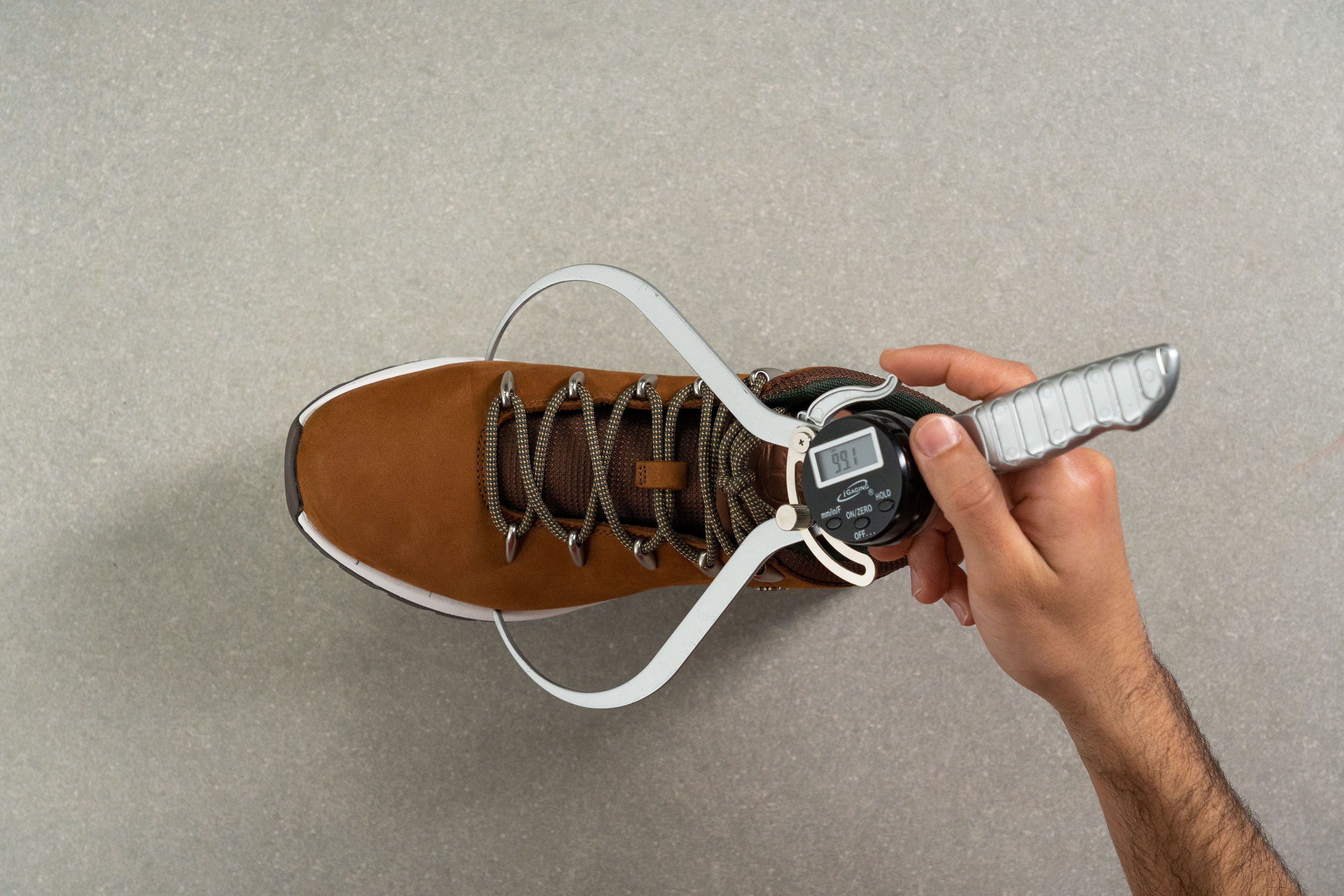
This test follows an older methodology, which is why you don't see recently tested shoes in the chart. Results from different methodologies can not be compared.
| Sprint Trekker | 99.1 mm |
| Average | 102.1 mm |
Toebox width
...it is extremely tapered! We don't even need a measurement tool to see how narrow it gets towards the toes.
But when we do measure the width around the big toe with a caliper, we get only 69.6 mm! That's about 7 mm narrower than average and is an absolute disaster for wide feet. We don't think that going even a full size larger will help the situation.
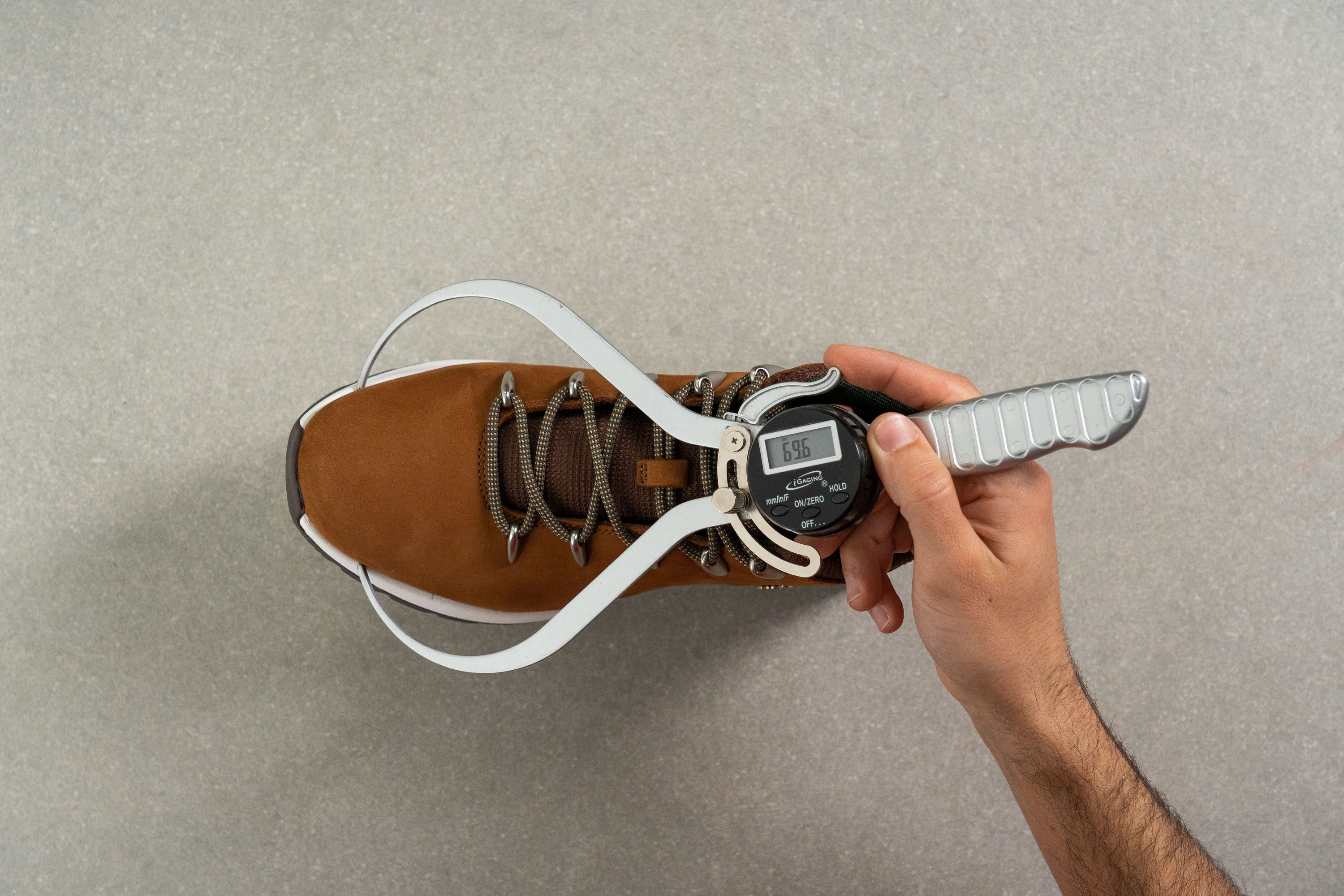
This test follows an older methodology, which is why you don't see recently tested shoes in the chart. Results from different methodologies can not be compared.
| Sprint Trekker | 69.6 mm |
| Average | 78.6 mm |
Traction / Grip
Lug depth
For a casually styled boot, the Sprint Trekker features a pretty aggressive set of lugs. Measuring their depth with a caliper, we got 4.0 mm, only 0.5 mm thinner than average.
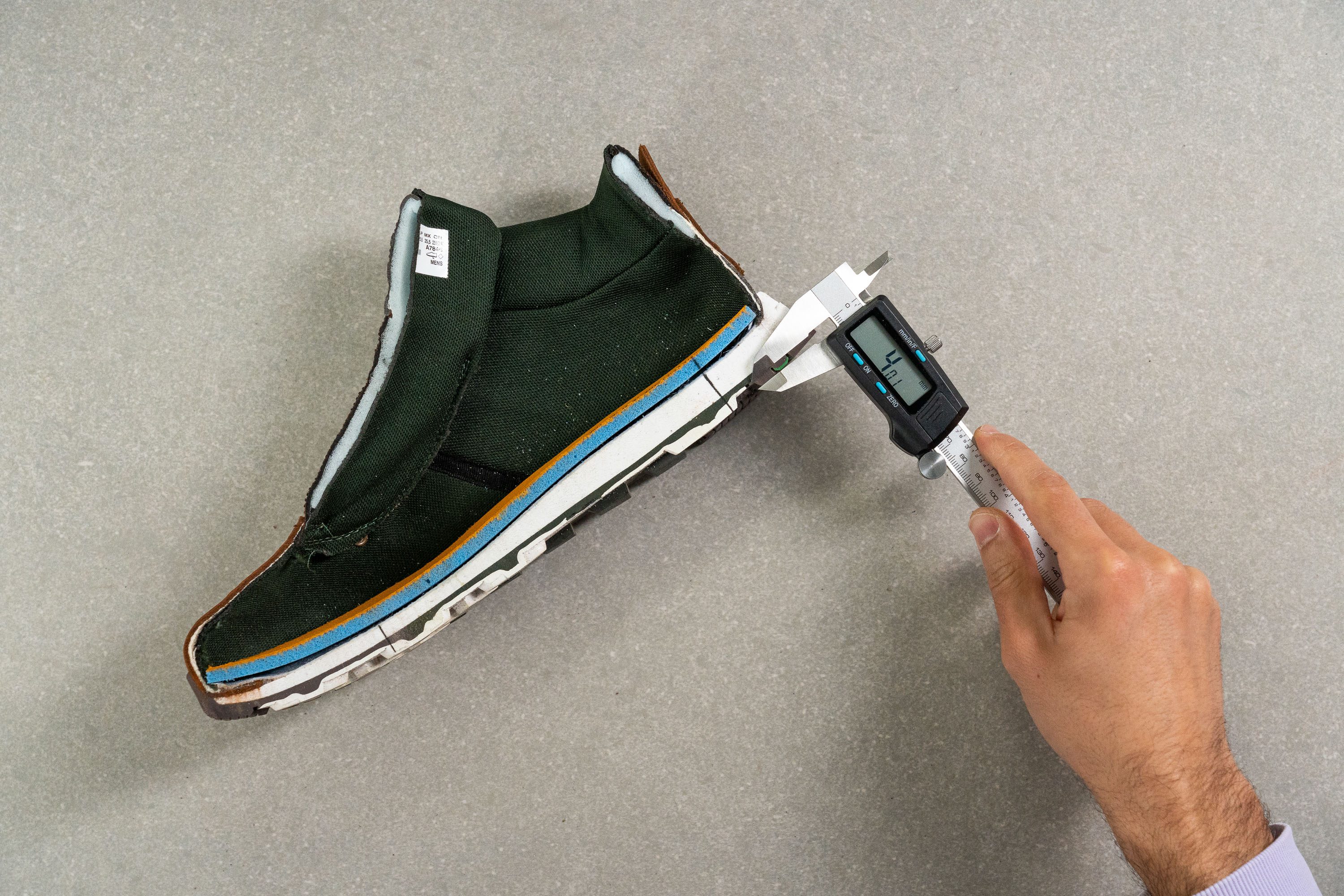
With their size and spacing, we believe that they make the outsole grippy enough for light mud and even some slush.
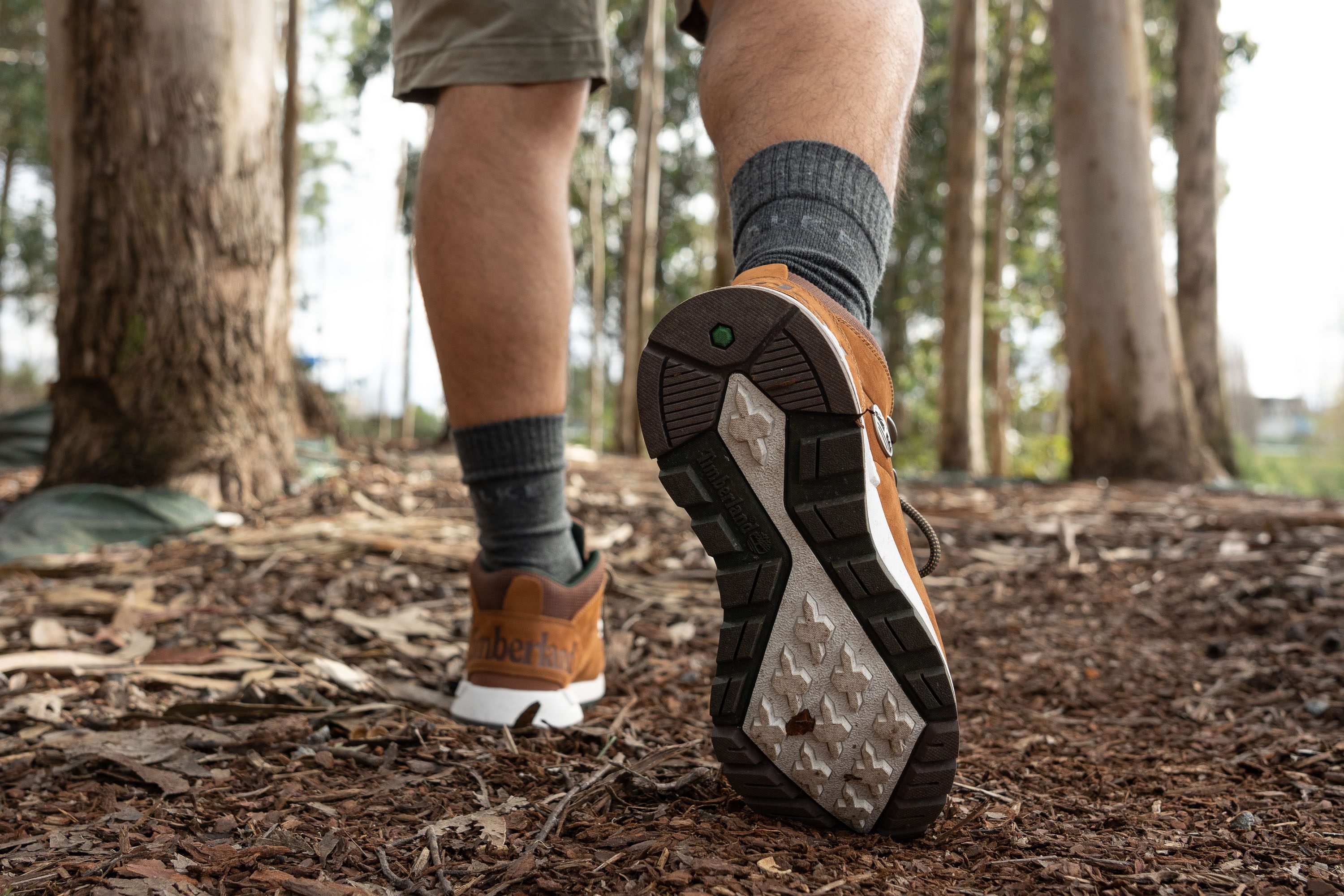
| Sprint Trekker | 4.0 mm |
| Average | 4.3 mm |
Flexibility / Stiffness
The Timberland Sprint Trekker allows the foot to bend more or less naturally. Putting it through our stiffness test, we found that it requires 13% less force to bend than other hikers.
Based on our force gauge, it took 38.6N to bend the boot to a 90-degree angle.
This test follows an older methodology, which is why you don't see recently tested shoes in the chart. Results from different methodologies can not be compared.
| Sprint Trekker | 38.6N |
| Average | 44.3N |
Stiffness in cold (%)
In low temperatures, do expect the boot's flexibility to go down. After 20 minutes in the freezer, we discovered that the Sprint Trekker required a force of 53.2N.
But the good news is that the difference in stiffness wasn't as drastic on this Timberland boot as it was in some other hiking boots. The Trekker got 37.7% stiffer whereas the average hovers around 50%.
| Sprint Trekker | 38% |
| Average | 24% |
Weight
The Timberland Sprint Trekker boasts a pleasantly light weight for a boot that's entirely made of leather.
In a men's US size 9, we found that it comes in at 16.5 oz (468g) which is about 2 ounces lighter than average.
Wearing this minimal boot for multiple hours a day never feels like a chore.
| Sprint Trekker | 16.5 oz (468g) |
| Average | 18.7 oz (531g) |
Breathability
Wearing this Timberland boot in summer is probably not the best idea. Fully covered in nubuck leather, the Sprint Trekker felt quite toasty on our feet on a summer day.
There are no mesh inserts or ventilation holes to let the heat escape from the inside.
As you can see from our smoke-pumping test below, the air is only passing through the gaps between the tongue and the upper. On a scale from 1 to 5, where 5 is the most breathable, we rated the Sprint Trekker as 2.
| Sprint Trekker | 2 |
| Average | 1.3 |
Stability
Lateral stability test
In our opinion, the Sprint Trekker is not the boot to consider if you need high levels of stability and support. In this regard, it feels more like an outdoor sneaker.
Torsional rigidity
Twisting the Sprint Trekker in our hands, it turned out to be way too flexible for a proper hiking boot. We rated its torsional rigidity as 3 out of 5, where 5 is the stiffest.
To make it clear, this was not a problem for our casual stroll on a manicured trail. But we can see how it would get wobbly on the more uneven ground.
| Sprint Trekker | 3 |
| Average | 4.4 |
Heel counter stiffness
The same goes for the boot's heel counter. On a 1-5 scale where 5 is the stiffest, we rated it as low as 2.
It does have some stiffness to prevent the heel from slipping all over the place. But this heel counter is not sturdy enough to create a highly secure foothold for carrying a loaded backpack or paving your way through rocky trails.
| Sprint Trekker | 2 |
| Average | 3.6 |
Midsole width - forefoot
Finally, this Timberland boot proves its more casual-oriented design with a slightly narrower platform.
Measuring the widest part of the forefoot, our caliper showed 109.1 mm. Being only a few millimeters narrower than average, this already subtracts from the boot's overall stability.
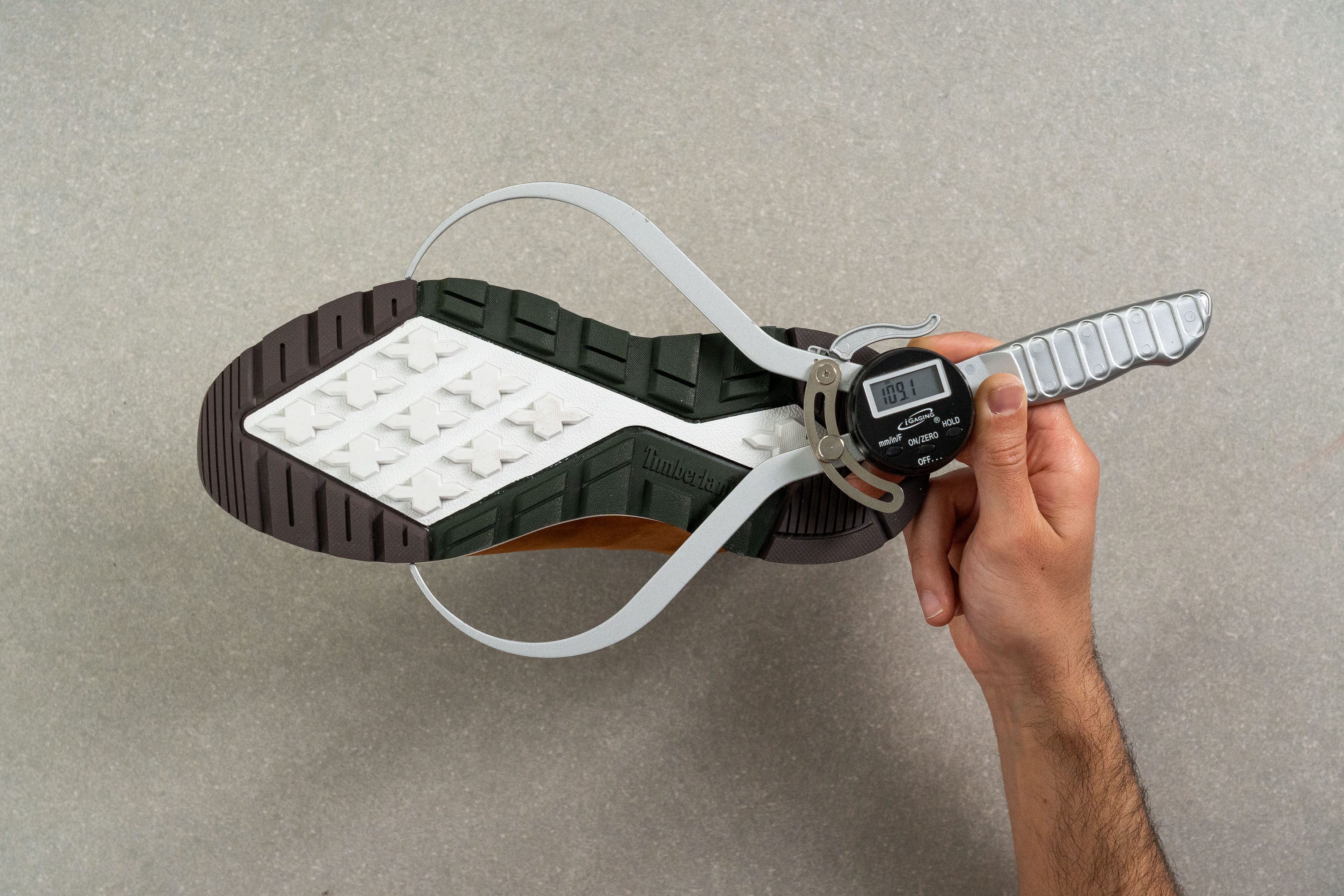
| Sprint Trekker | 109.1 mm |
| Average | 111.5 mm |
Midsole width - heel
In the heel, however, the widest part of the sole comes in at 92.1 mm. That's the same width as the average.

| Sprint Trekker | 92.1 mm |
| Average | 87.6 mm |
Durability
Outsole hardness
The Sprint Trekker was given an incredibly hard outsole rubber. Pressing our durometer against it returned one of the highest measurements we've seen in hiking boots - 92 HC!
Having lab-tested hundreds of shoes, we found that harder rubbers tend to have the longest shelf life. Thus, we have a good feeling about the boot. Its hard outsole will also resist the abrasion from concrete pavements better.
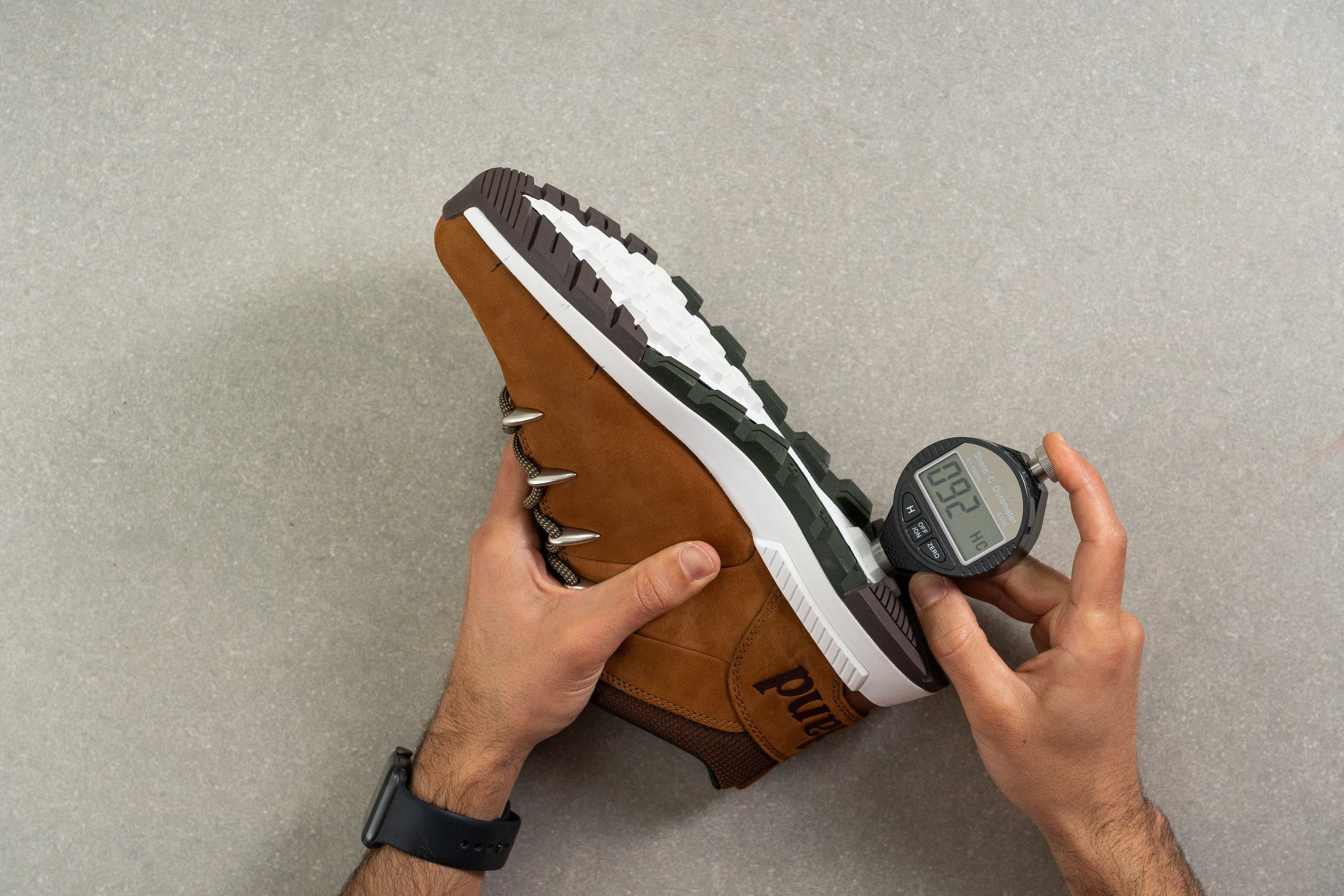
| Sprint Trekker | 92.0 HC |
| Average | 87.1 HC |
Outsole thickness
We were also happy to find that the rubber layer is pretty thick. Our caliper shows 3.8 mm of thickness excluding the lug depth.
Sure, it's only a millimeter thicker than average but it will take longer to wear through that extra millimeter.
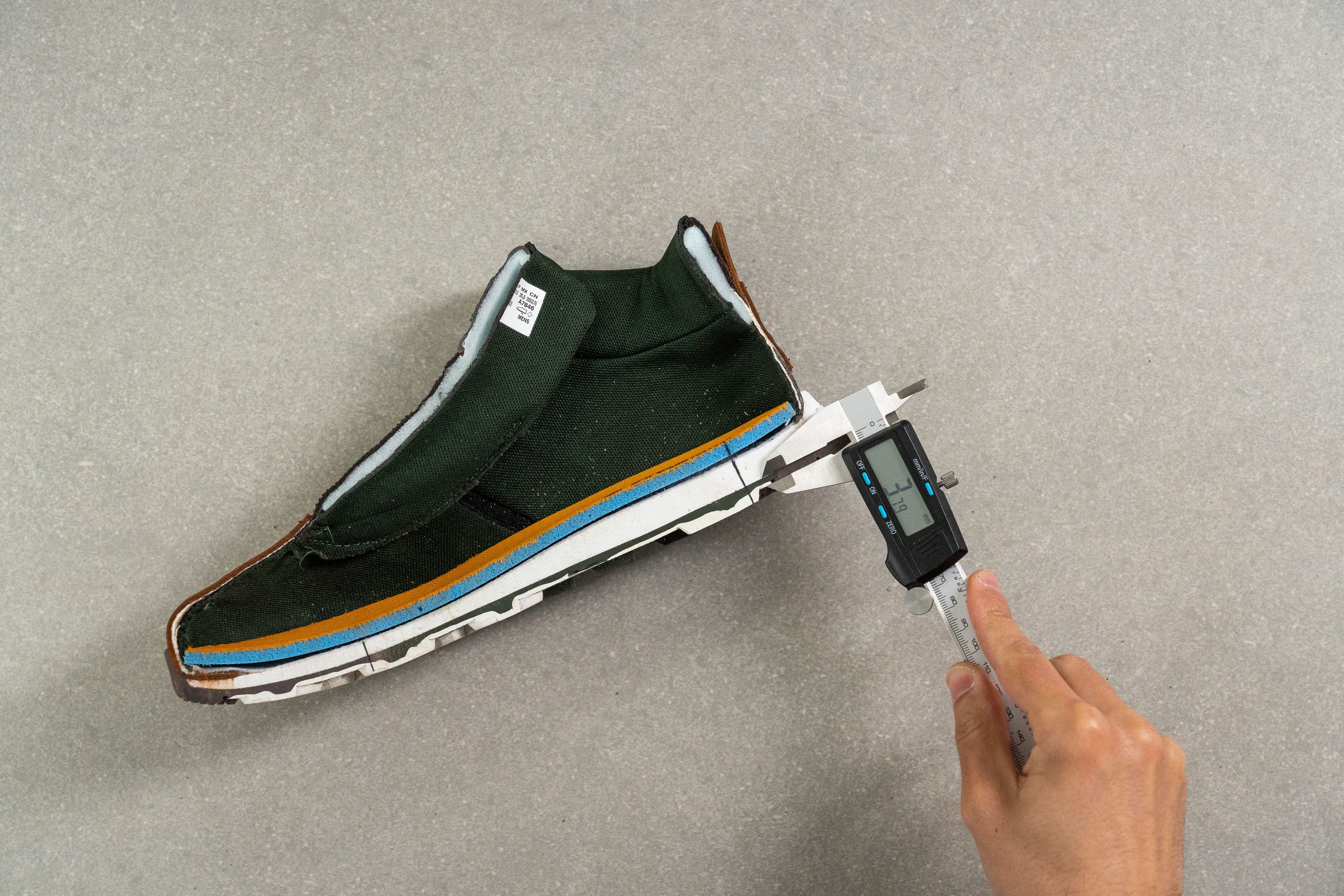
| Sprint Trekker | 3.8 mm |
| Average | 2.9 mm |
Misc
Insole thickness
The Timberland Sprint Trekker comes with a cozy Ortholite insole. It did a very nice job wicking out the moisture on our toasty summer hike.
Measuring the insert with a caliper, we found that it is 5.6 mm thick in the heel.

| Sprint Trekker | 5.6 mm |
| Average | 6.0 mm |
Removable insole
For those of you who need a custom orthotic, the boot's default insole is easily removable. However, given the boot's narrow toebox, we cannot guarantee that it would fit.
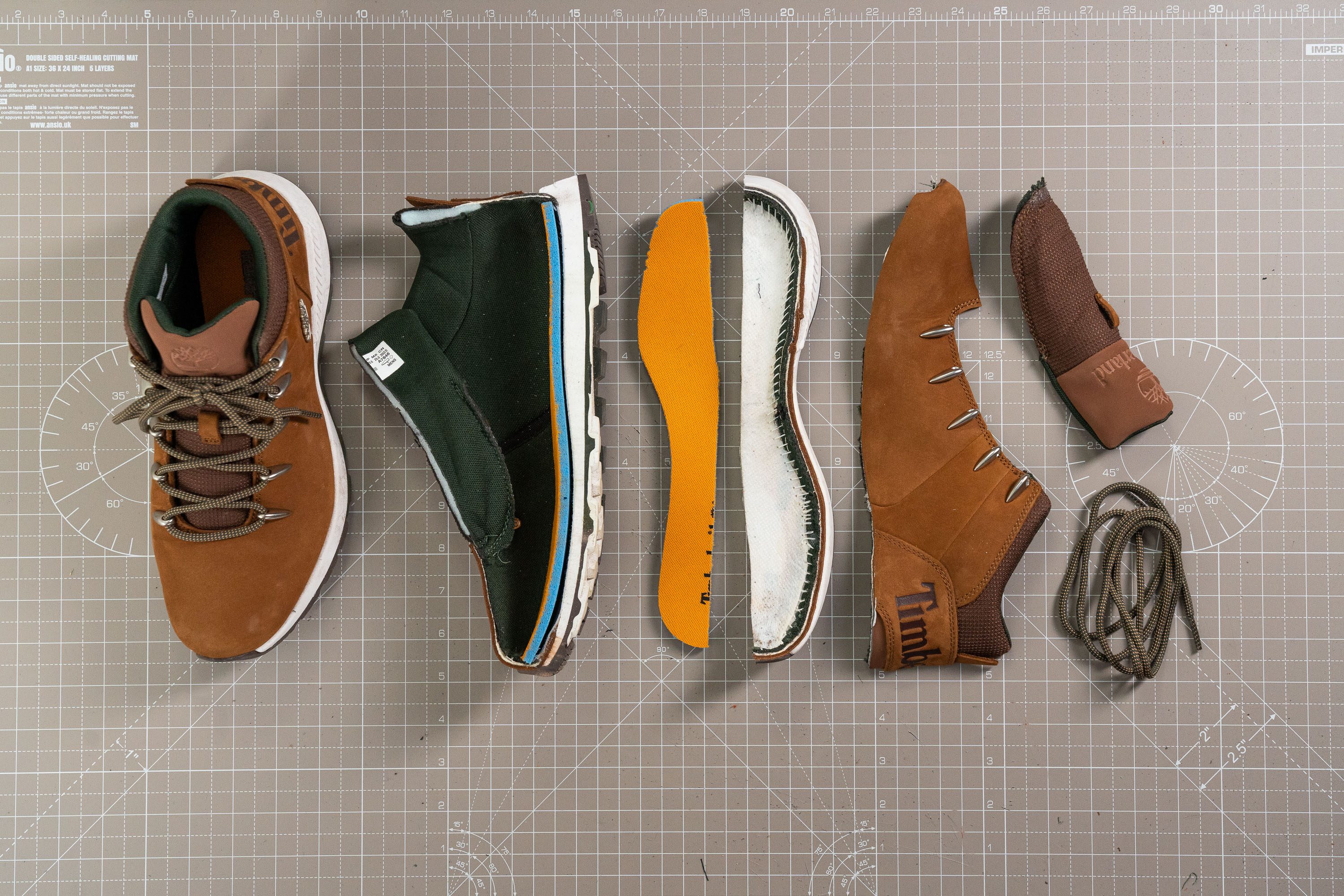
| Sprint Trekker | Yes |
This section is a work in progress
Midsole softness in cold (%)
If you intend to wear the boot when temperatures drop down to 30°F (0°C), we must warn you that the boot will get firmer. But luckily, it's nothing critical.
After keeping the boot in our freezer for 20 minutes, we repeated the durometer measurement. The result went from 28.8 HA to 33.6 HA, indicating that the foam got 17% firmer.
Comparing the results with other boots, we saw that the difference was just average.
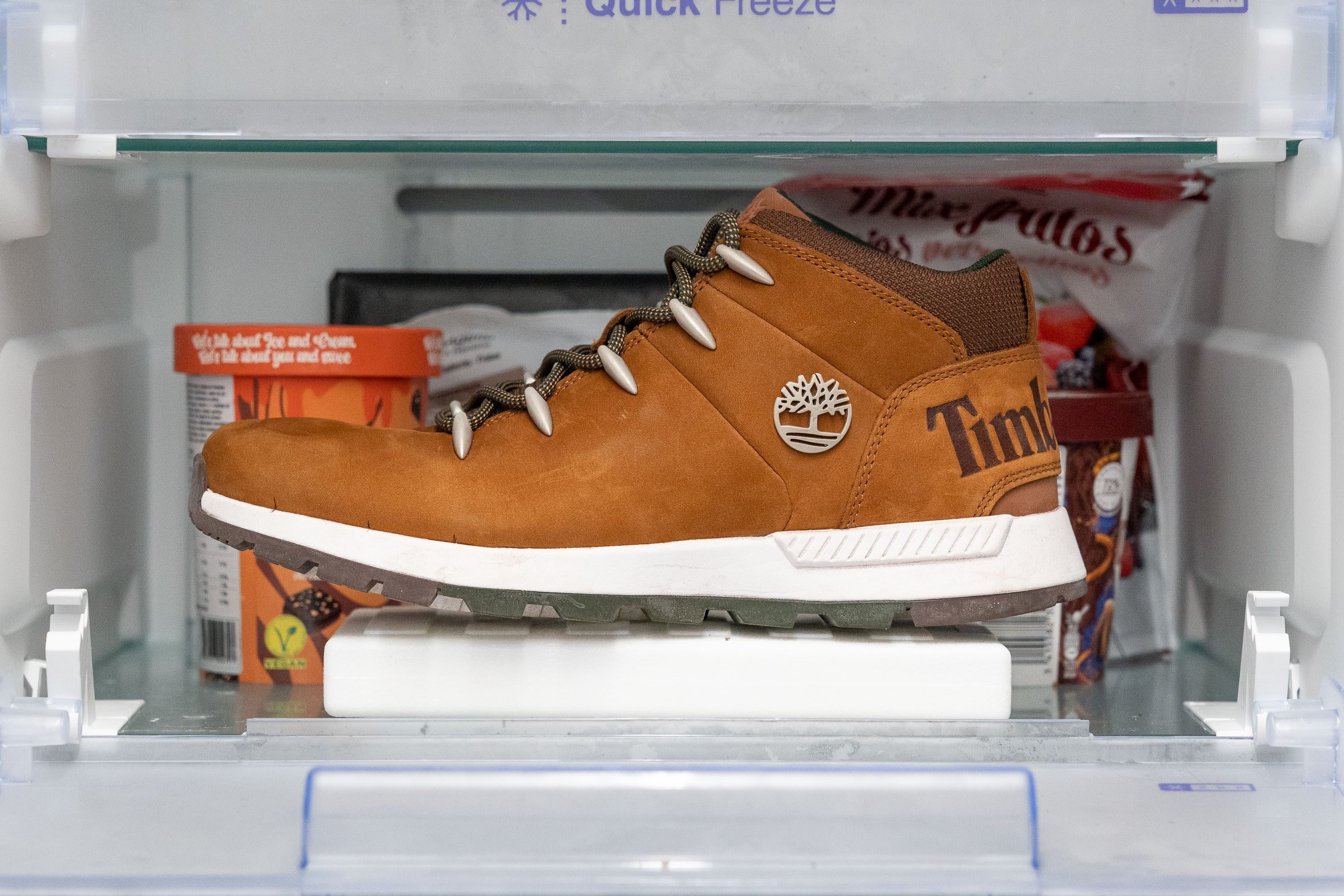
| Sprint Trekker | 17% |
| Average | 20% |
Tongue padding
Despite the Sprint Trekker's minimal design, it didn't skimp on the tongue padding. We measured a good 11.3 mm of foam in the tongue which is the same as the average.
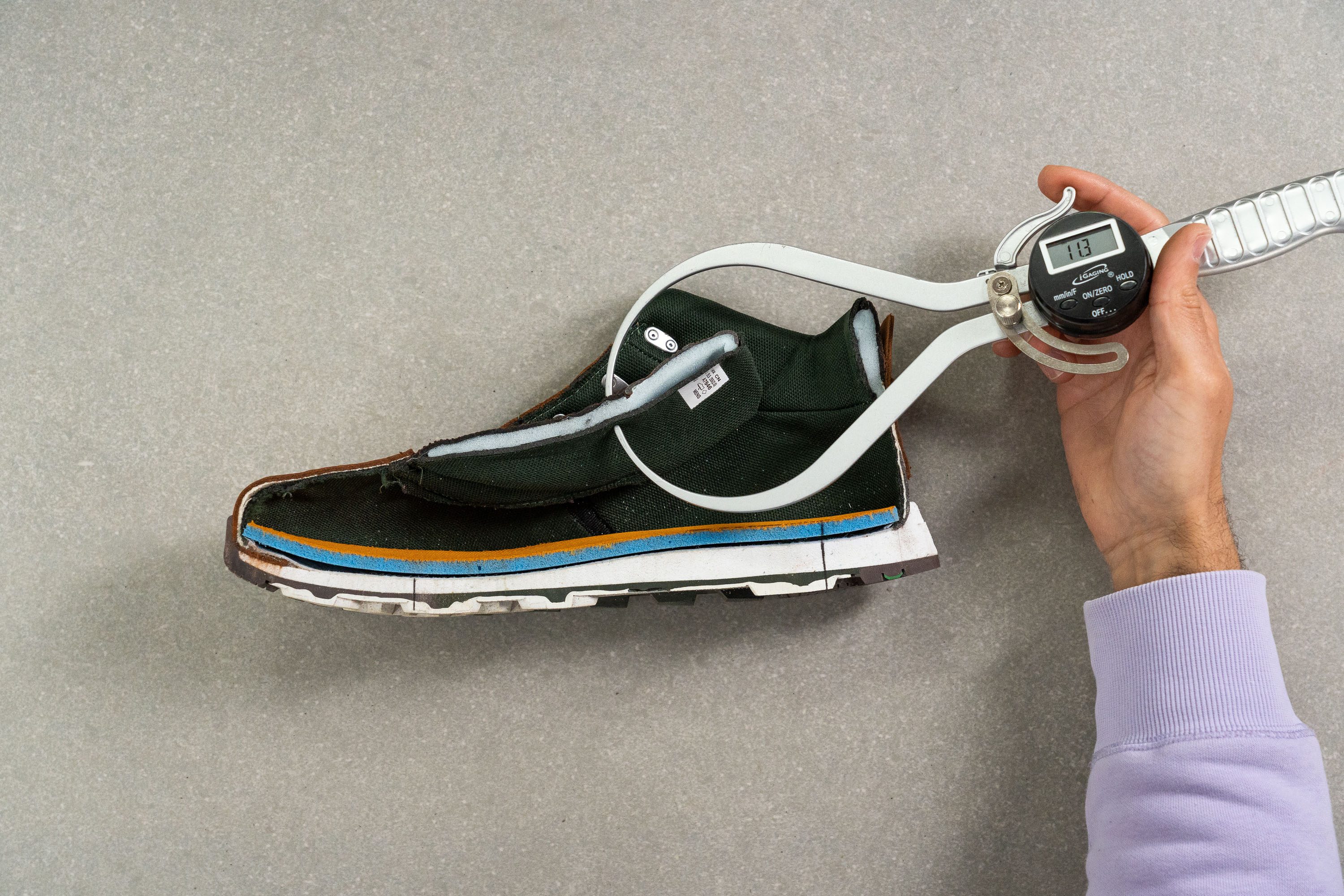
| Sprint Trekker | 11.3 mm |
| Average | 11.2 mm |
Tongue: gusset type
There are no gussets on the tongue of the Sprint Trekker. We didn't have any issues with the tongue sliding to the side as it seems to have a pretty ergonomic shape.
Also, those gaps between the tongue and the upper appear to be the only source of breathability in this Timberland boot.
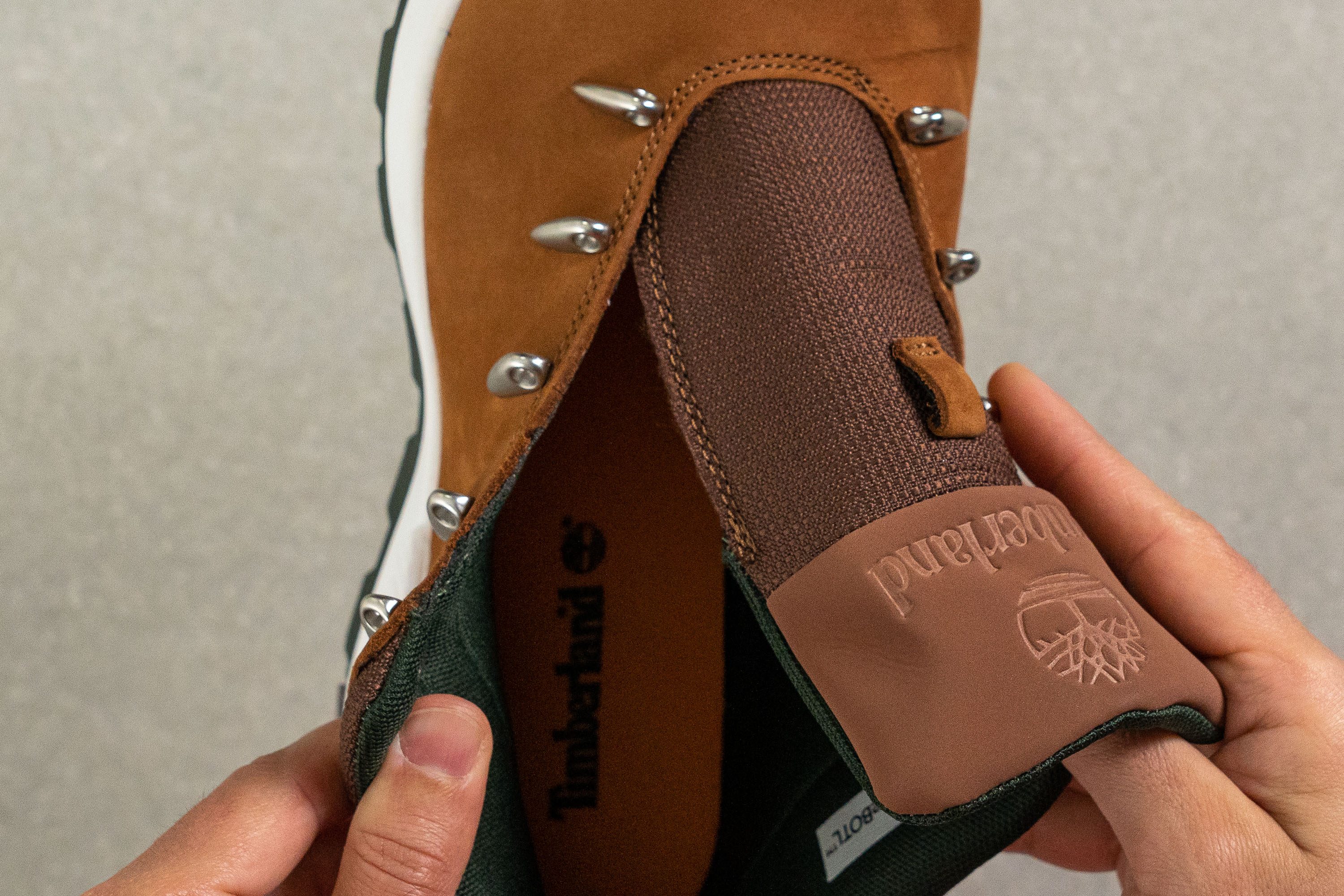
| Sprint Trekker | None |
Heel tab
The pull tab is neatly embedded into the boot's leather overlay on the heel. It is stealthy but functional even though we didn't find it necessary.
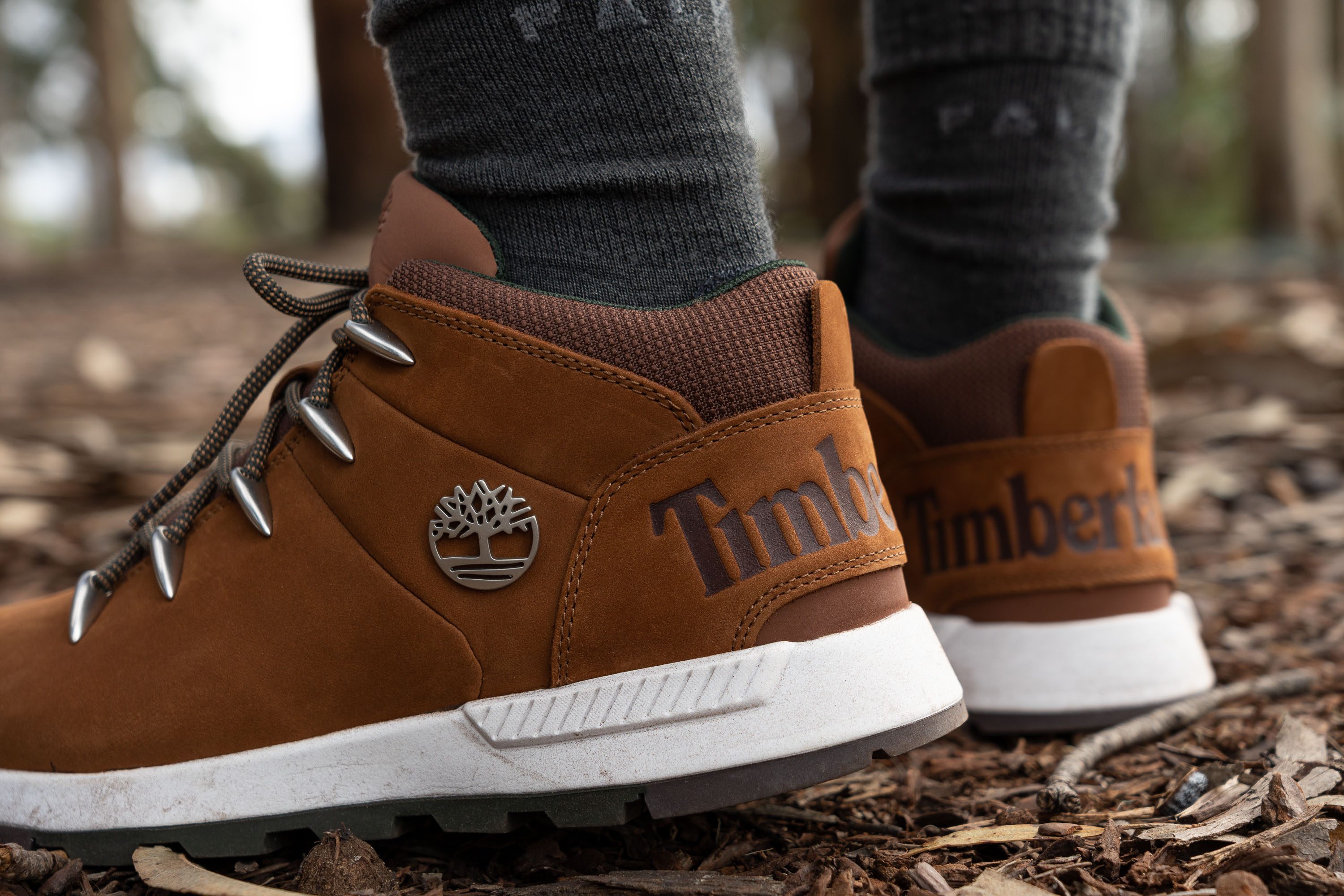
| Sprint Trekker | Pull tab |
Recycled materials
According to Timberland, the Sprint Trekker uses a durable ReBOTL fabric lining that's made with at least 50% recycled plastic. The idea behind it is that the non-biodegradable PET plastic bottles are recycled and turned into RPET yarns.

